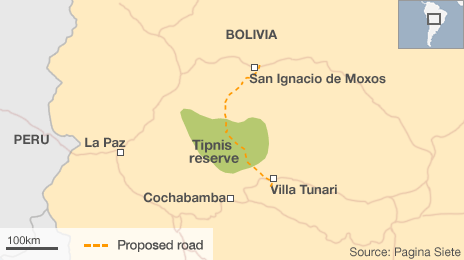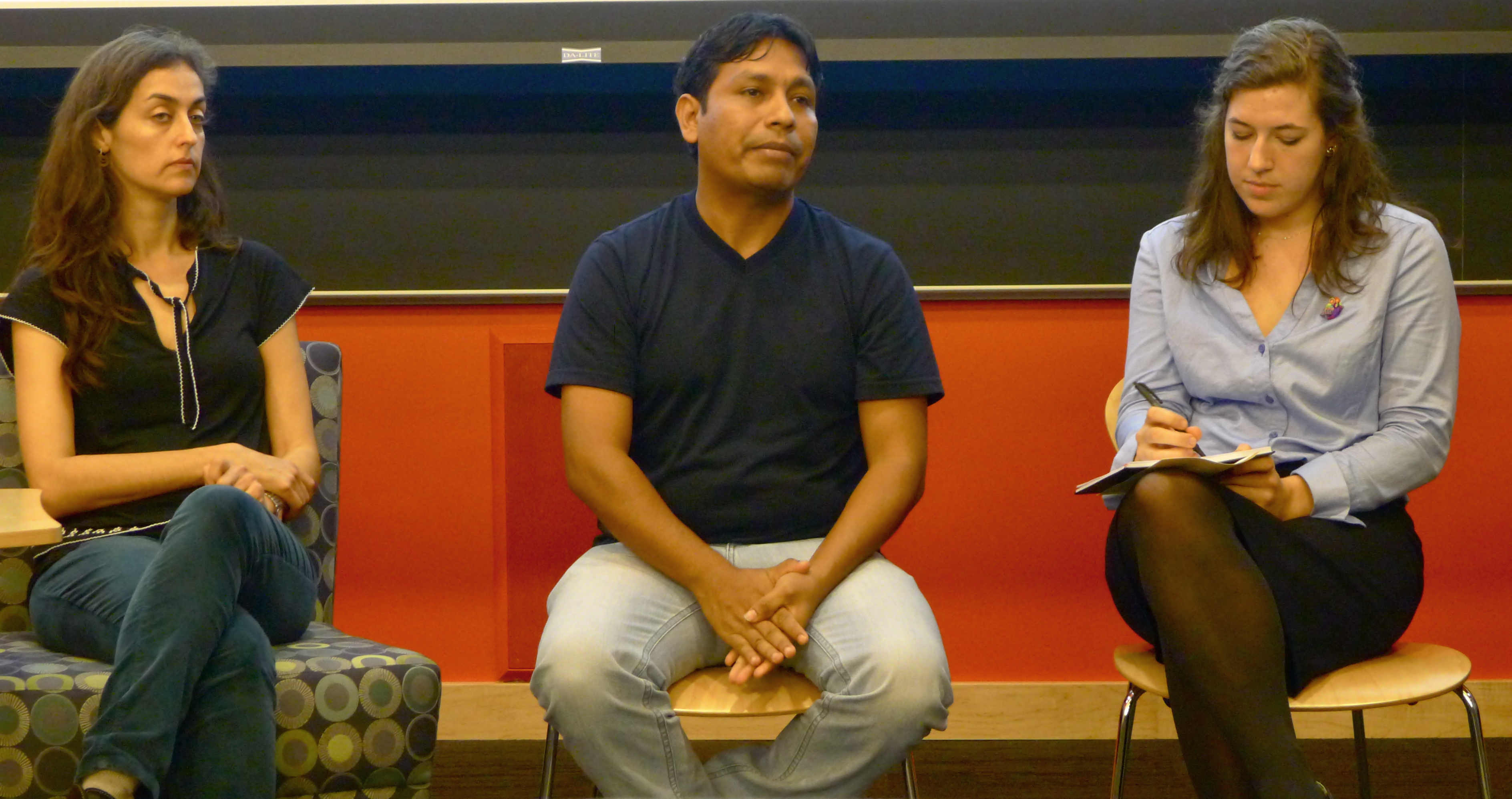
Mbya, Tierra en Rojo, is a film that shows the ongoing struggle of the indigenous Mbya Guaraní community in northeast Argentina to gain rights for their land, receive basic social services and to be recognized by the Argentine state. The directors lived in the community for many months and got to know the community and their daily fight for survival. The film shows how the indigenous populations of Argentina are still on the margen of national consciousness and reflects the persisting colonial ideology and erasure of the indigenous identity. Through the portrayal of daily activities, relationships and universal sentiments as satisfying hunger or caring for loved ones, the film relates a personal quality to the audience that stirs compassion in the viewers and makes us relate to their situation.
[imagebrowser id=2]
The second event of the week was a presentation by Hernán Ávila Montaño on the forested richly biodiverse region of the Isiboro Securé Indigenous Territory or TIPINIS in central lowland Bolivia. Hernán gave an overview of the history of indigenous mobilization and protests from 1990 up through today. He focused on the current struggle between the Bolivian state, the TIPINIS and the interest of private corporations in constructing a highway that would run straight through the territory. In addition, it would destroy and disrupt this environment which is home to many different species of flora and fauna. 
Hernán explained that there were a number of marches in protest in 1990, 1996 and 2002 that indigenous communities led to fight for their land rights. Dating back to the late nineteenth century and leading up to the Bolivian Revolution in 1952, there has been an active rural and indigenous political tradition that has resisted the privatization of indigenous communal lands. Protests, ‘sit-ins’ and marches have been used in the past to fight for representation land and civil rights.
The fight continues up until today, raising questions of how to modernize Bolivia, create economic opportunities for foreign investment that will lead to growth, however it also involves the exploitation of the land and the people who inhabit it. Below is a paragraph from an online journal that summarizes the start of the march. In 2011,
Hernán explained to us that a new constitution was established in 2009 which recognizes the political and juridicial plurality that exists in Bolivia and deemed the TIPINIS as a protected “untouchable” ecological zone. However, a law was created called, el derecho de consulta (Law of Consult) that would discuss the TIPINIS’ status as untouchable and consult the indigenous communities on the construction of the road and measures to be taken to protect the territory from be settled illegally in the future.
The marches from Beni to la Paz were repressed violently by Bolivian police, which caused an uproar throughout the country. The consult law also opened up national controversy over the road and the TIPINIS as it has ambiguous connotations for the legal battles to follow. Because the contract between the Bolivian government and the Brazilian companies have already been made, it is difficult to foresee how Evo Morales is going to deal with the strong rural movements throughout Bolivia.

Leave a Reply